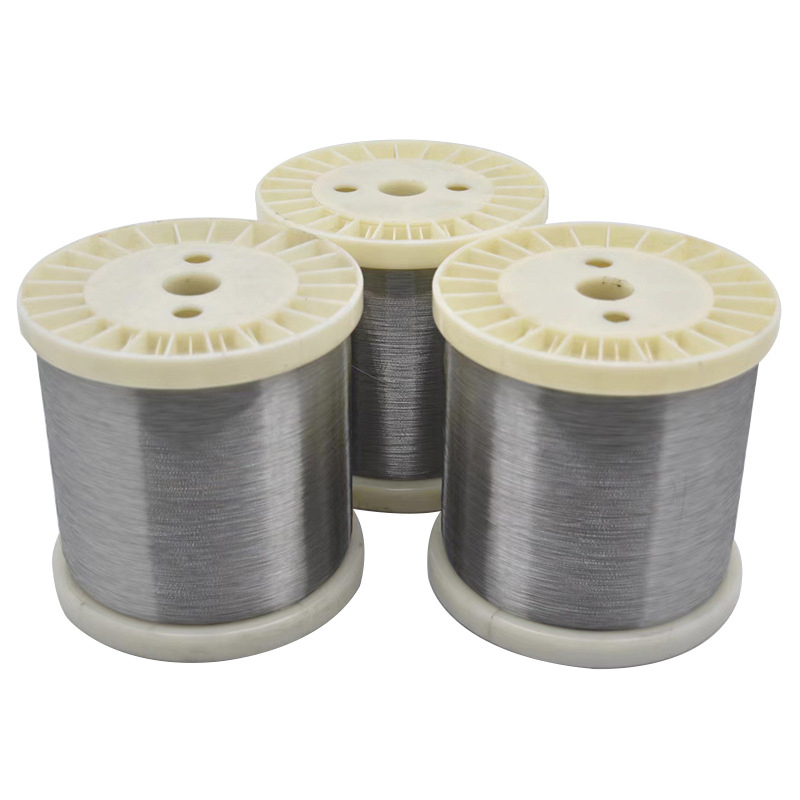Service Hotline
+86 18948275773+86 13632667260
Nickel titanium alloy wire is a functional material with shape memory effect and superelasticity, which has been widely used in multiple fields due to its unique mechanical properties and biocompatibility. According to different classification standards, nickel titanium alloy wires can be classified into various types. The following are common classification methods and specific types:
1、 Classified by the proportion of nickel titanium alloy composition
The properties of nickel titanium alloys are closely related to the atomic ratio of nickel (Ni) and titanium (Ti), and different ratios will affect their phase transition temperature and mechanical properties.
(1) Near equiatomic ratio nickel titanium alloy wire
The atomic ratio of nickel to titanium is close to 1:1 (usually 50% to 51% nickel), which is the most common type. Has significant shape memory effect and superelasticity, suitable for medical devices (such as vascular stents, orthodontic wires), aerospace structural components, etc.
(2) High nickel content nickel titanium alloy wire
The proportion of nickel atoms is slightly higher than 51%, the phase transition temperature decreases, and the superelasticity range is wider. It is commonly used in scenarios that require low-temperature superelasticity, such as low-temperature sensors or special elastic components.
(3) Low nickel content nickel titanium alloy wire
When the proportion of nickel atoms is less than 50%, the phase transition temperature increases, and the shape memory effect becomes more pronounced at high temperatures, making it suitable for shape memory drive devices in high-temperature environments.

2、 Classified by heat treatment process
The heat treatment process can alter the microstructure of nickel titanium alloys, thereby regulating their properties.
(1) Annealed nickel titanium alloy wire
After annealing treatment, the grain size is refined, the material plasticity is improved, and the stress distribution is uniform. Commonly used in scenarios that require certain flexibility and processability, such as wire wrapping or flexible connectors.
(2) Aging nickel titanium alloy wire
By aging treatment (insulation aging), strengthening phases are precipitated to improve strength and shape memory stability. Suitable for occasions with high mechanical performance requirements, such as orthodontic wires and surgical instruments.
(3) Cold drawn nickel titanium alloy wire
Without annealing, it retains the dislocations and lattice distortions after cold processing, with high strength but low plasticity. It is commonly used in springs or fasteners that require high elastic recovery force.
3、 Classified by functional characteristics
Divide according to specific functions required in the application scenario.
(1) Shape memory nickel titanium alloy wire
Has temperature induced shape memory effect: deforms at low temperatures and returns to its original shape after heating up. Typical applications include:
Medical devices: vascular stents (expandable at body temperature), orthodontic wires (return to preset shape at body temperature).
Aerospace: Automatic locking device for pipeline connections (temperature triggered).
(2) Super elastic nickel titanium alloy wire
After being deformed by external forces at room temperature, removing the load can completely restore the original state (elastic strain can reach over 8%), without the need for temperature triggering. Commonly used for:
Glasses frame (anti deformation, easy to recover).
Medical suture anchor (high elasticity to reduce tissue damage).
(3) Damping type nickel titanium alloy wire
By utilizing the energy dissipation characteristics during the phase transition process, it has good vibration reduction and noise reduction capabilities, and can be used for vibration reduction of aircraft engine blades and shock mounts for precision instruments.
4、 Classified by application field
Different industries have specific requirements for the performance and specifications of nickel titanium alloy wires.
(1) Nickel titanium alloy wire for medical use
Orthodontic wire: With appropriate superelasticity and memory properties, gradually apply light force to correct teeth.
Vascular stent wire: with good biocompatibility, it can expand and maintain its shape within blood vessels, supporting narrow blood vessels.
Surgical instrument wire: such as the driving wire of minimally invasive surgical forceps, which utilizes shape memory effect to achieve precise manipulation.
(2) Nickel titanium alloy wire for industrial use
Sensor wire: temperature sensitive type, used for temperature control switches and flow sensors.
Mechanical connectors: restore shape at high temperatures to achieve automatic connection of pipelines or components.
Aerospace wire: lightweight and fatigue resistant, used for satellite antenna deployment mechanisms and aircraft fuel pipe joints.
(3) Nickel titanium alloy wire for consumer electronics
Anti shake wire for mobile phone camera module: super elastic to ensure lens stability.
Wearable device connector: flexible and fatigue resistant, suitable for folding screen phone hinges.
Unique advantages of nickel titanium alloy wire
Biocompatibility: Non toxic, non allergenic, and can be implanted into the human body for a long time.
Fatigue resistance: It can withstand millions of cycles of deformation without failure in a hyperelastic state.
Corrosion resistance: The surface oxide film is stable and not easily corroded in environments such as body fluids and seawater.
If you need specific selection suggestions for application scenarios, please contact us for more accurate recommendations of suitable alloy wire types.